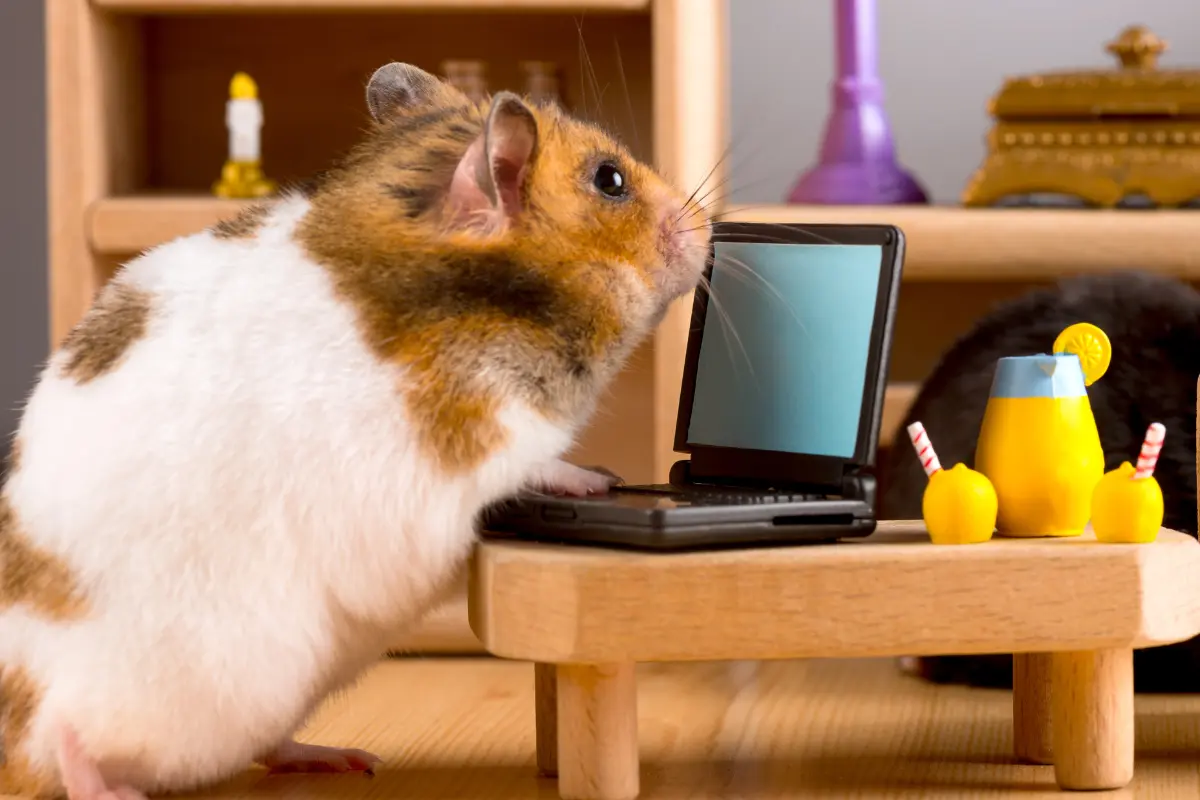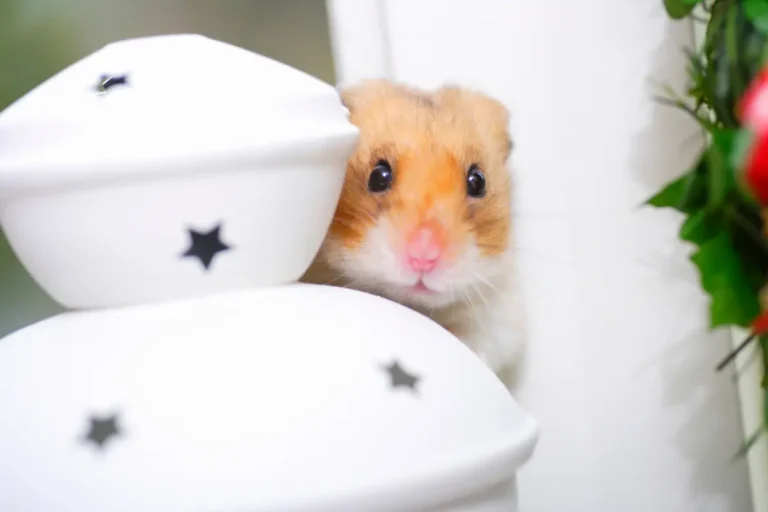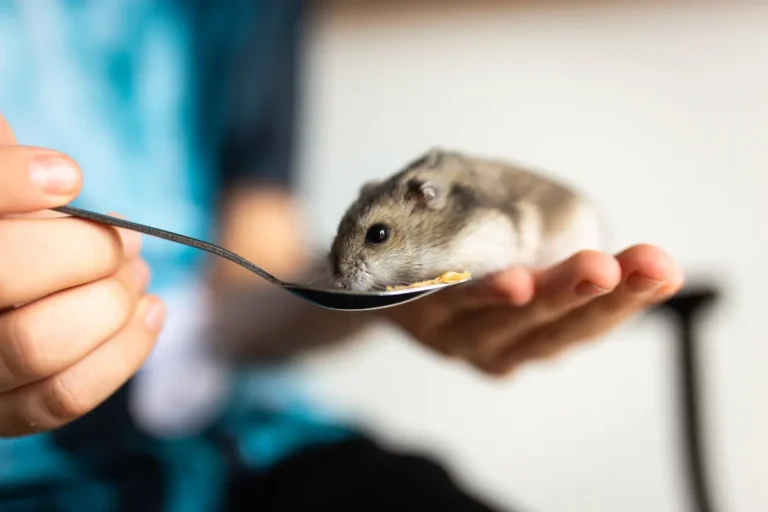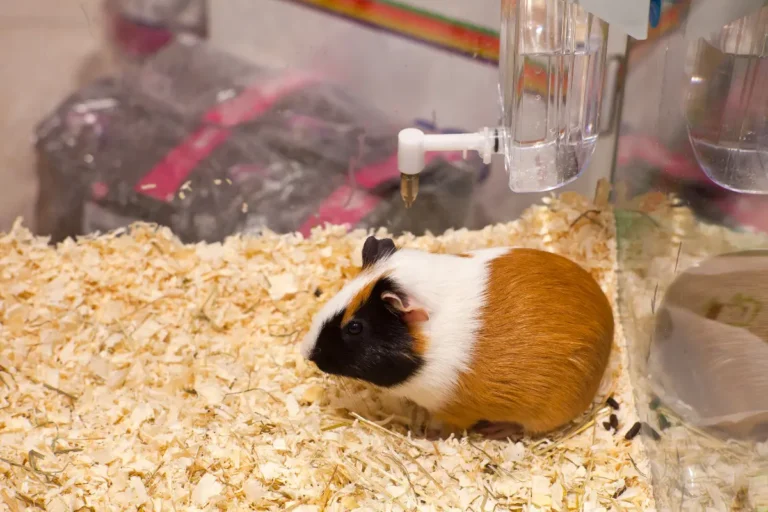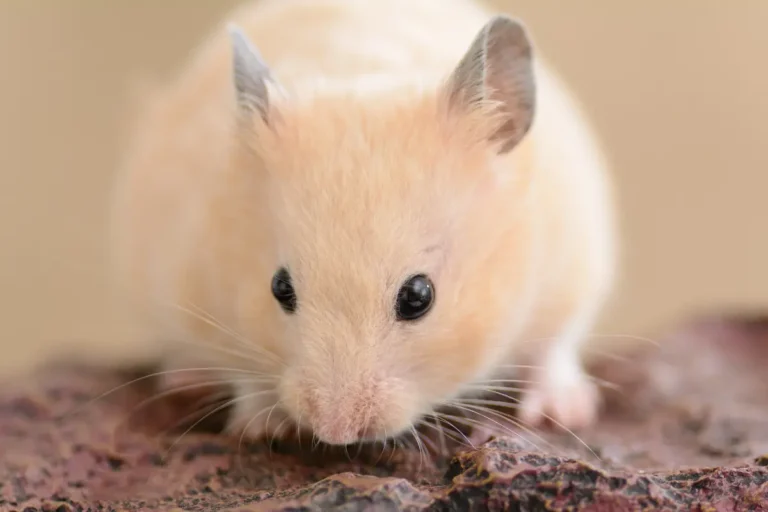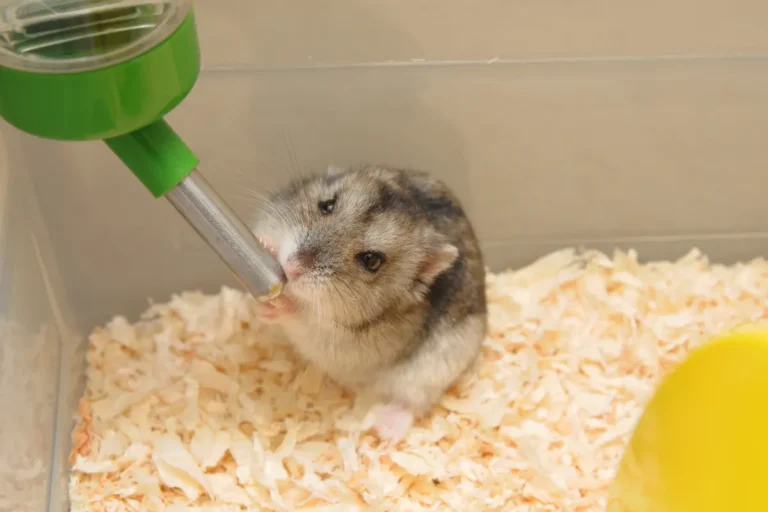14 Things to Keep Your Hamster Happy and Thriving
Hamsters are more than just cute, tiny pets – they have specific needs and preferences that, when met, can make them happier and healthier.
From burrowing deep into their bedding to snacking on healthy treats, here are 14 things that hamsters love the most. Incorporating these into their daily routine will ensure your little companion is well-cared for and content.
1. Deep Bedding for Burrowing
Hamsters are natural-born burrowers. In the wild, they dig intricate networks of tunnels for warmth, protection, and sleep, often creating separate chambers for different purposes, such as sleeping, storing food, and using as a bathroom.
To satisfy this instinct, your hamster needs a thick layer of safe bedding – at least 6 inches deep, but the deeper the better! This allows them to dig and create burrows, mimicking their natural habitat.
The bedding should be made of a soft, dust-free material that is safe for your pet. Additionally, providing varied textures in the bedding can further enrich your hamster’s experience and make burrowing even more enjoyable.
Here are some safe and suitable options for your hamster’s burrowing needs:
- Paper-based bedding: Soft, absorbent, and dust-free, making it a popular choice.
- Aspen shavings: Another safe and absorbent option, although it can be slightly less soft than paper bedding.
- Hemp bedding: A natural and sustainable option that is also very absorbent.
Offering your pet the opportunity to build these tunnels can lead to better emotional health, reducing anxiety and allowing your hamster to feel more secure in their environment.
2. A Large Wheel for Exercising
Hamsters are high-energy animals that naturally run up to six miles every night in search of food. A large wheel in their cage is essential to provide the exercise they need, replicating the distance they would cover in the wild.
Make sure the wheel is appropriately sized for your hamster. The general rule of thumb is that your hamster should be able to run in the wheel with a straight back and without its back arching upwards.
- Syrian hamsters: Need a wheel that is at least 10-12 inches in diameter.
- Dwarf hamsters: Require a wheel that is at least 6.5 inches in diameter.
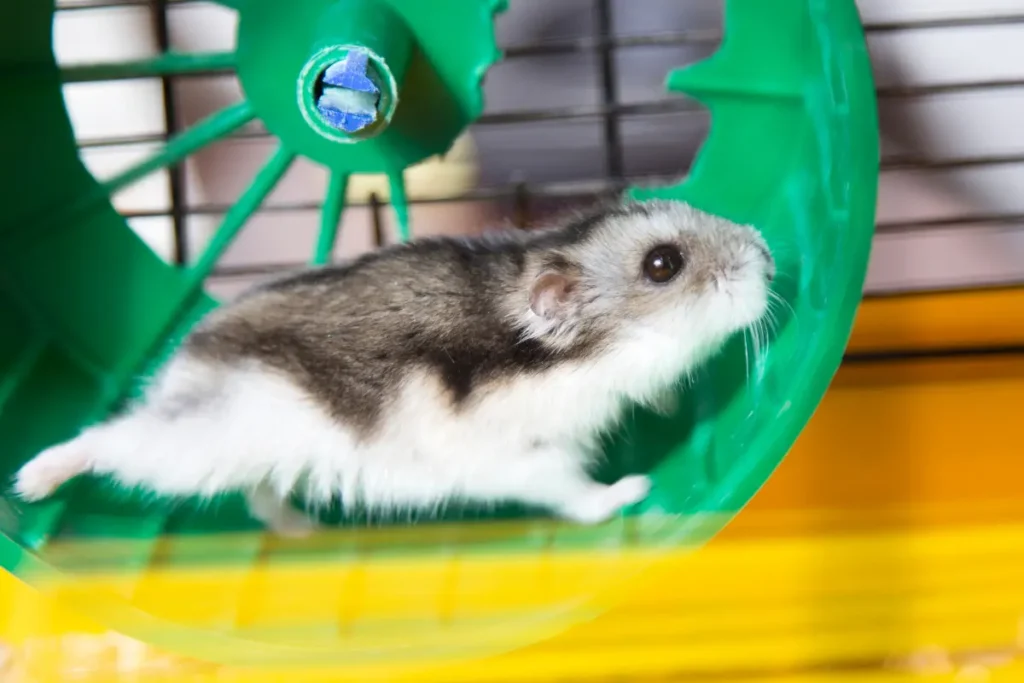
The wheel should also have a solid running surface to prevent injuries—wheels with rungs or mesh can cause your hamster’s feet to get caught, leading to potential harm.
While most hamsters take to wheels naturally, some may need encouragement:
- Place the wheel in an easily accessible area of the cage.
- Ensure the wheel is stable and doesn’t wobble during use.
- Try different types of wheels to see which your hamster prefers.
- Never force your hamster onto the wheel – let them discover it on their own.
Additionally, ensure the wheel runs quietly, as noisy wheels can disturb both your hamster and anyone nearby during their nighttime activities.
3. Foraging Opportunities
Hamsters are natural foragers. In their wild habitats, they spend a significant portion of their nights exploring and searching for food, using their keen sense of smell to locate tasty morsels.
You can recreate this enriching activity by sprinkling food around their cage or hiding treats in their bedding and toys. This will encourage them to explore and work for their food, keeping them both physically and mentally stimulated.
Scatter Feeding: Instead of placing all the food in a bowl, scatter it around the cage, hiding some in the bedding, under toys, or in tubes.
Foraging Toys: Use toys specifically designed for foraging, such as:
- Toilet paper tubes: Stuff with hay or bedding and hide treats inside.
- Dig boxes: Fill a small container with shredded paper, hay, or coconut fiber and bury treats within.
- Treat balls: These require your hamster to roll the ball to dispense treats.
Natural Foraging Materials: Provide safe and enriching foraging materials like:
- Dried herbs: Sprinkle dried herbs like chamomile, dandelion, or parsley around the cage.
- Flax sprays or oat sprays: These provide a tasty and challenging foraging experience.
- Hide treats in bedding: Bury treats within the bedding to encourage digging and searching.
Additionally, you can use puzzle feeders or place small portions of food inside different toys and tunnels to further challenge your hamster. Experiment with different hiding spots and treat types to see what your hamster enjoys the most.
4. Hiding Spots for Security
As prey animals, hamsters need safe spaces to retreat when feeling stressed or threatened. Providing several hideouts in your hamster’s enclosure helps them feel secure and safe from perceived threats.
Types of Hiding Spots:
- Hamster Houses: Small houses made of wood, plastic, or ceramic provide a cozy and enclosed space.
- Tunnels and Tubes: Cardboard tubes, PVC pipes, or specialized hamster tunnels offer a fun and secure way to explore and hide.
- Nest Boxes: Closed-off boxes filled with soft nesting material like shredded paper or tissue provide a comfortable and private space.
- DIY Hideouts: Get creative and make your own hideouts using items like coconut shells, small flower pots, or even cardboard boxes.
Make sure not to disturb them while they are in their hideouts, as this is their safe space where they can rest and feel at ease.
5. Ample Daytime Sleep
Hamsters are crepuscular, meaning they need plenty of sleep during the day. If your hamster is not getting enough sleep, they may exhibit signs of stress or behavioral problems.
Use opaque bedding or a cover over part of their enclosure to help create a calm space that mimics their natural burrow. It’s also important to monitor household noise levels during the day, as sudden loud sounds can disturb their sleep.
6. A Varied and Nutritious Diet
Hamsters thrive on a diverse diet. To ensure your pet is well-fed, provide a high-quality seed mix along with high-protein pellets.
Keep in mind that most commercial seed mixes lack adequate animal protein, so supplementing with protein-rich pellets is crucial. You can also introduce fresh vegetables and fruits in moderation to add variety and important vitamins to their diet.
Leafy greens like spinach, kale, and romaine lettuce are great options, as well as vegetables like carrots, broccoli, and bell peppers. Be cautious when introducing new foods, and always ensure they are safe for hamsters to eat.
7. Plenty of Chew Toys
Hamsters’ teeth grow continuously throughout their lives. This means they need to gnaw and chew on things regularly to keep their teeth at a healthy length.
Providing your pet with items like wooden chew toys, walnut shells, coconut shells, or cardboard can help them maintain their dental health and stay happy.
Chewing is also a natural behavior that helps relieve stress and boredom. Rotate different chew items regularly to keep your hamster engaged and excited about their environment.
8. Scent Marking
Hamsters are territorial and love to spread their scent around their habitat. Syrian hamsters have scent glands on their sides, while dwarf hamsters have scent glands on their lower abdomen. This natural behavior is important for their sense of ownership and comfort in their space.
Hamsters may also rub their scent on favorite toys or in specific areas of their cage, which helps them feel more at home.
Providing opportunities for your hamster to express this behavior, such as including different textured surfaces or objects in their enclosure, can further enrich their environment and reduce stress.
9. Gentle Handling and Soft Massages
Once trust is established, many hamsters enjoy gentle petting and even soft massages.
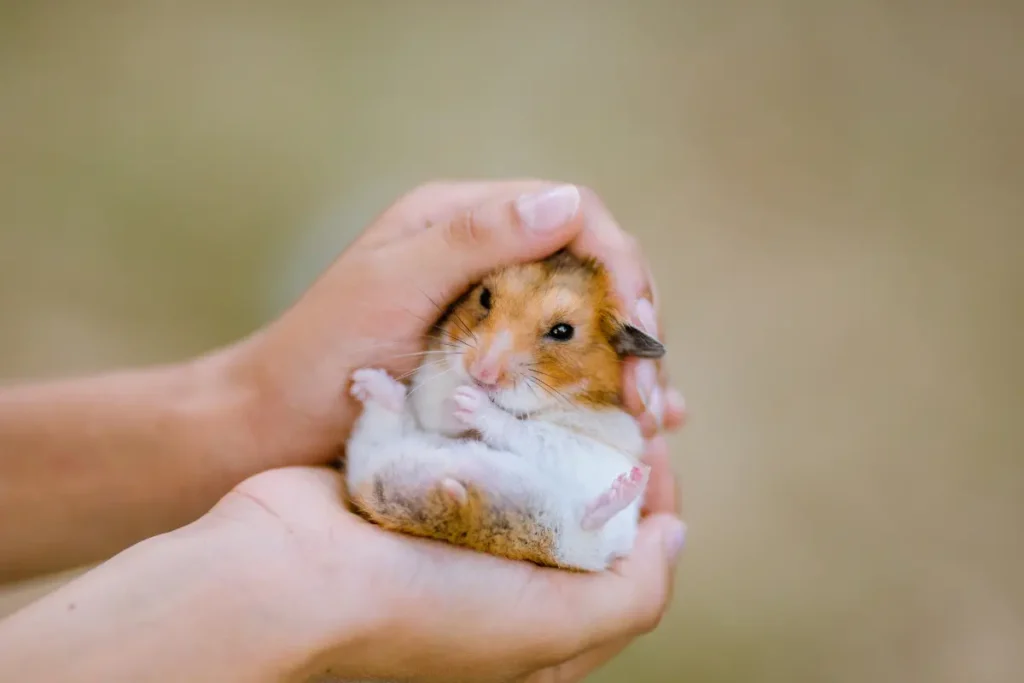
Use gentle, circular motions with your fingertips to stroke their fur. Pay attention to their body language and stop if they show signs of discomfort.
Offering small treats from your hand can also help build trust, allowing them to associate you with positive experiences. However, each hamster has a unique personality, and some may not enjoy being handled. Always approach them with care and respect their boundaries.
10. A Spacious Cage
Despite their small size, hamsters need ample space to thrive. A larger cage allows for more enrichment items, like a sand bath, different substrates, and a properly sized wheel. This prevents stress and promotes physical and mental well-being.
Recommended Cage Sizes:
While there is no one-size-fits-all answer, here are some general guidelines for cage size:
- Minimum Size: The absolute minimum cage size for any hamster is 450 square inches of floor space. However, larger is always better.
- Syrian Hamsters: As the largest hamster species, Syrians need the most space. Aim for a cage with at least 600 square inches of floor space, but ideally 700-1000 square inches or more.
- Dwarf Hamsters: Dwarf hamsters (Campbell’s, Winter White, Roborovski) can do well in slightly smaller cages, but still need ample space. Aim for at least 450 square inches of floor space, but ideally 600 square inches or more.
A multi-level setup can also add more dimensions to explore, allowing your hamster to climb and discover new areas. This variety helps maintain their interest and keeps them happy and active.
11. Cardboard Tubes for Play
Sometimes the simplest things bring the most joy, and for hamsters, cardboard tubes are a prime example. Whether it’s a toilet paper roll, a paper towel tube, or a cardboard tube from wrapping paper, these humble objects can transform your hamster’s cage into a playground.
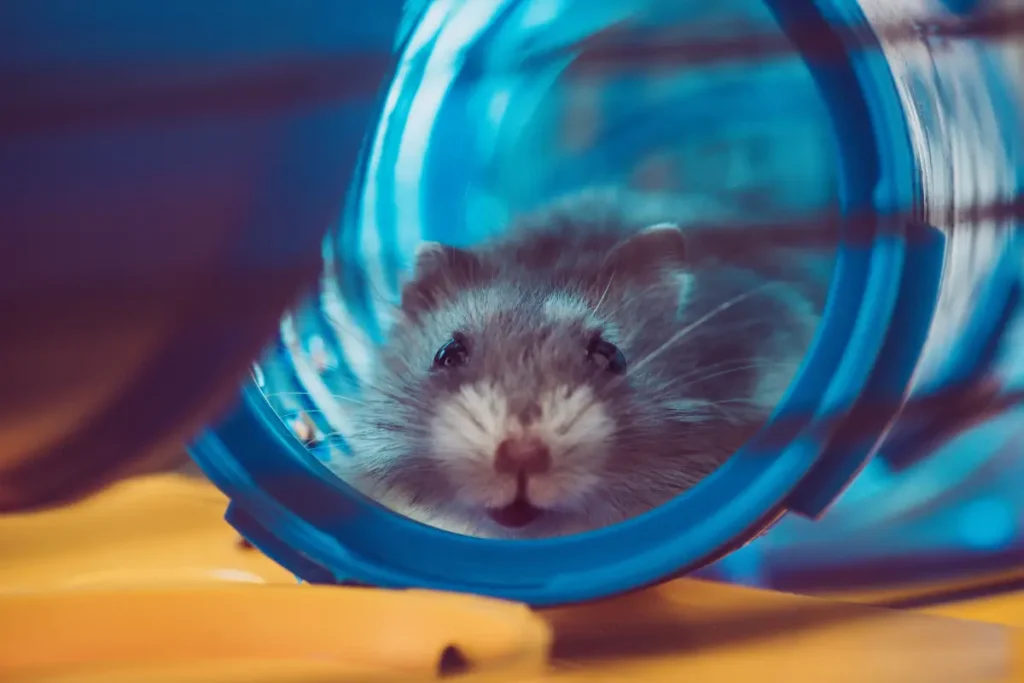
Creative Ways to Use Cardboard Tubes:
- Climbing Structures: Prop tubes against other objects in the cage to create climbing structures and add verticality to your hamster’s environment.
- Tunnels and Mazes: Connect multiple tubes to create elaborate tunnels and mazes for your hamster to explore.
- Hideouts: Place a tube in the cage as a cozy hideaway where your hamster can feel safe and secure.
- Chew Toys: Hamsters love to gnaw on cardboard, making tubes a great way to satisfy their chewing instincts and keep their teeth healthy.
- Foraging Challenges: Stuff tubes with hay, bedding, or shredded paper and hide treats inside to create a fun foraging challenge for your hamster.
Providing these simple yet effective items will ensure your hamster stays active, entertained, and happy.
12. A Calm and Quiet Environment
Hamsters are sensitive creatures, easily stressed by loud noises and disturbances. Avoid placing the cage near loud televisions, music systems, or in areas with constant movement, as stress can negatively affect their physical and mental health.
It’s also important to avoid placing their cage in areas where there are sudden temperature fluctuations, such as near windows, radiators, or air conditioning units. Keeping their enclosure indoors helps maintain a stable temperature and avoid drafts.
Ideally, place the cage in a dimly lit area where they won’t be disturbed by bright lights, as this can also contribute to stress.
13. Sand Baths for Grooming
Originating from dry climates, hamsters don’t need traditional water baths. They enjoy rolling around in the sand to clean their fur.
Provide a small container filled with pet-safe sand for them to indulge in this natural behavior. The abrasive texture of the sand helps remove dirt, moisture, and excess grease from their fur, keeping them clean and healthy.
Sand baths also offer mental enrichment, as many hamsters find the activity of digging and rolling in the sand fun and stimulating. You can also place the sand bath in different locations within the enclosure to encourage exploration and play.
14. Healthy treats
Healthy treats are a great way to bond with your hamster. Offer them treats like apple, pear, or banana in moderation—about once a week—to avoid excessive sugar intake.
You can also offer other healthy options such as small pieces of cucumber, broccoli, or carrot, as well as occasional protein treats like cooked egg or mealworms.
Treats should not make up more than 10% of their overall diet, as too many can lead to obesity and other health issues. Always ensure that treats are cut into small, manageable pieces to prevent choking and keep a close eye on how your hamster reacts to new treats, as some foods may not agree with them.
